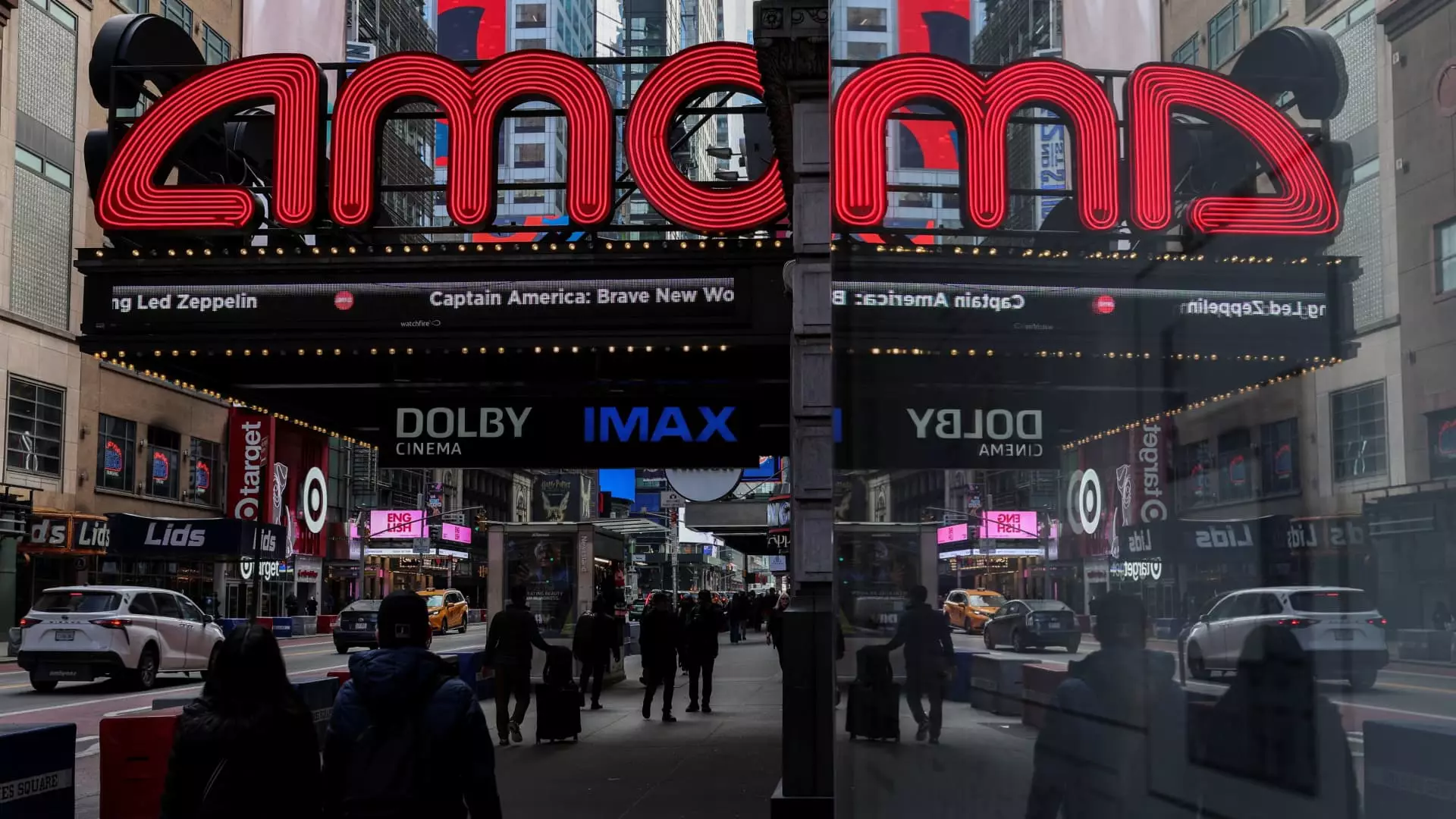As the summer blockbuster season approaches, Hollywood is not just about filling theaters; it’s about redefining the viewing experience. AMC Entertainment, the world’s largest cinema chain, is taking bold steps, announcing its plan to add 40 Dolby Cinema screens by 2027. This 25% increase in premium screens illustrates a crucial shift in moviegoing culture, as cinema lovers are evidently craving enhanced viewing experiences. Yet, the actual number of moviegoers who can appreciate such advancements is disturbingly low.
While AMC’s initiative may seem like a step in the right direction, one can’t help but wonder if premium formats like Dolby Cinema really cater to the tastes and budgets of the average moviegoer. The average premium ticket price hovers just under $17, a significant bump that doesn’t align with the realities of everyday life for many. In a world where inflation and economic disparity are on the rise, can we truly expect the masses to invest in what is, effectively, an elitist cinema experience?
The Attraction of Premium Large Formats and High Prices
Dolby Cinemas are designed for luxury, boasting plush reclining seats and advanced audiovisual technology that promises to envelop viewers in a multisensory journey. Similarly, formats like Screen X and 4DX offer theatrical spectacles like never before, complete with sweeping panoramic views and real-life sensory effects such as wind and water. These experiences have been crucial in drawing crowds to major franchise films, with titles such as “Oppenheimer” and “Avatar: The Way of Water” performing excellently at the box office.
However, the question looms large: are the extravagant prices justified? Behind the alluring veneer of immersive experiences lies a prominent divide. This trend of theatrical opulence may resonate most with faithful fans of large franchises, yet a significant portion of the populace will continue to settle for traditional viewing experiences. AMC’s expansion may indeed promise “premium moviegoing,” but it also risks alienating those who simply want a good film without the financial strain.
Box Office Realities: A Two-Tiered System
The data speaks volumes: as of 2024, fewer than 9.1% of domestic box office receipts come from PLF screens. With a staggering 950 theaters sporting such premium formats, the reality is that the majority of moviegoers are still funneling into standard screenings. This two-tiered system of cinema might exacerbate a cultural gap where the experience of watching films becomes a privilege reserved for those who can afford it.
In an age where streaming platforms threaten traditional cinema’s existence, does it make sense for AMC to focus predominantly on luxury? While the company’s approach is underpinned by financial motivations—after all, premium screens rake in higher average ticket prices—the risk could be falling into the trap of creating a niche experience increasingly unattainable for average consumers. Moviegoing should be an inclusive cultural staple, not a lavish retreat for the wealthy.
Future Implications: Accessibility versus Exclusivity
As the demand for premium formats rises, Hollywood’s film industry finds itself at a crossroads. With blockbuster content dominating the horizon—think franchise behemoths and superhero sagas—there’s a growing concern that creativity takes a backseat. Independent films, which once thrived on the silver screen, may become further marginalized. In this heated race towards premiumization, smaller movies, which often embody unique storytelling and perspectives, face an uphill struggle for visibility.
AMC’s partnership strategies, such as teaming with CJ 4DPLEX for more 4DX and Screen X theaters, reflect the industry’s inclination to cater to spectacle rather than substance. The overwhelming focus on premium formats could inadvertently homogenize the cinema experience, transforming an art form into a glorified theme park ride. This transition raises moral and ethical questions—who truly benefits from this shift? Is it the consumer seeking transcendent experiences, or the corporations seeking profits?
In a world filled with infinite entertainment options—streaming, gaming, and virtual events—the industry’s commitment to a premium path could prove futile. As movie theaters become increasingly extravagant, will fewer people be willing to part with their cash for the luxury of spectacle, or will they gravitate towards more accessible forms of storytelling? Ultimately, as the industry continues to chase the allure of the high-end experience, only time will reveal the long-term consequences of this growth strategy.

